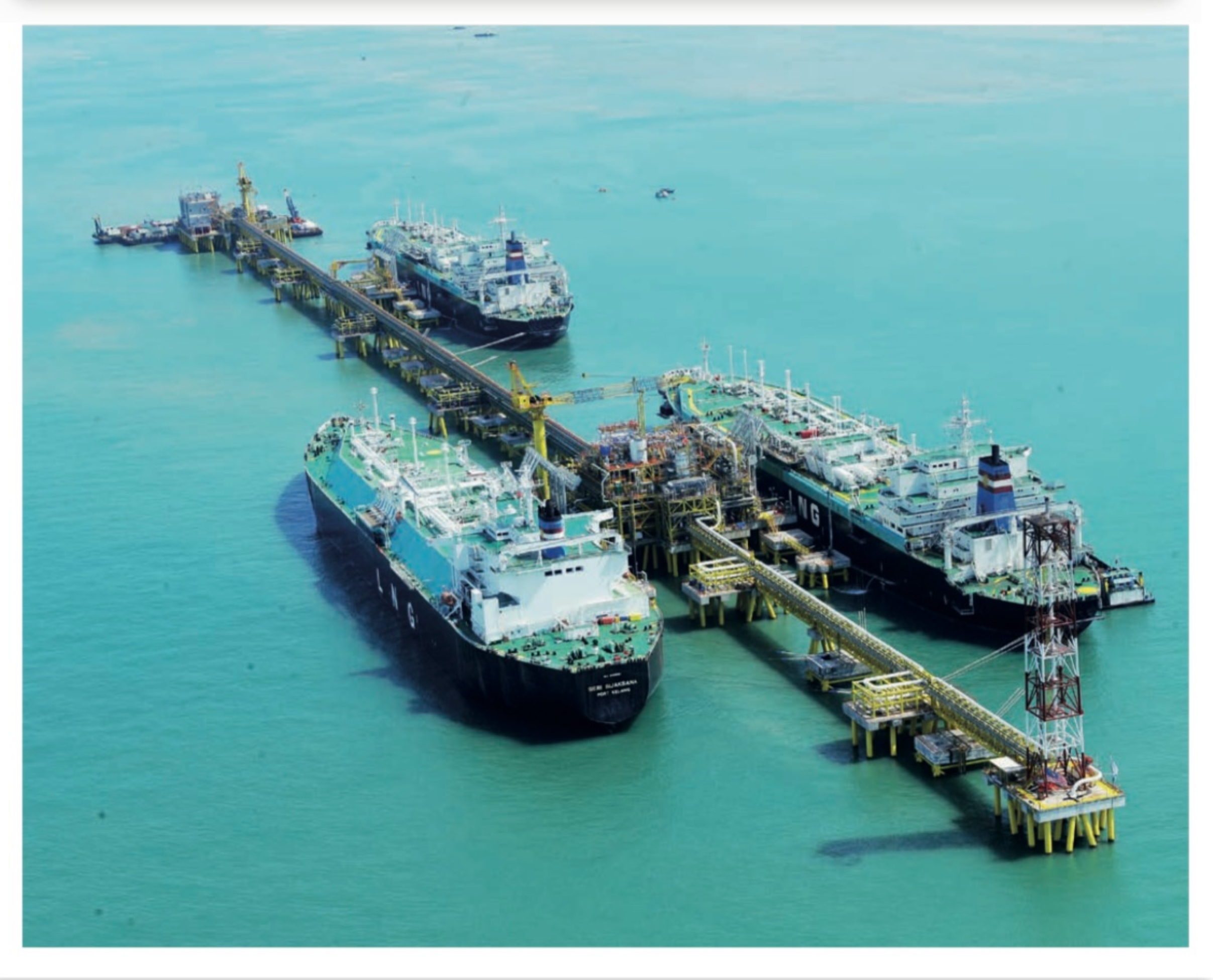Strategic Analysis: PETRONAS Block 52 FLNG in Suriname and its Alignment with Corporate Sustainability and Global LNG Market Outlook
1. Strategic Alignment with PETRONAS’ Sustainability and Gas Utilization Vision
PETRONAS’ 2023 Integrated Report outlines a future-facing strategy rooted in decarbonization, digitalization, and low-carbon energy expansion. The Block 52 FLNG project in Suriname, that I estimate and best-guess could contain a minimum of 1.3 trillion cubic feet (TCF) of gas, aligns with these goals in the following ways. Based on my own Canje formation source rock maturation, expulsion and trapping modelling I would expect gas much higher final reserves in the Block 52 – 58 and surrounding area:
a. Emissions Reduction and Energy Efficiency
• The FLNG model avoids long-distance pipelines and onshore infrastructure, minimizing construction-related emissions and land use.
• Case Study Reference: PETRONAS’ PFLNG DUA off Malaysia has demonstrated a 20% reduction in lifecycle emissions versus traditional onshore LNG plants, setting a precedent for Block 52.
• The use of digital twin models and AI-driven fuel management on FLNG vessels enhances operational efficiency and minimizes fuel consumption.
b. Gas Monetization & Flaring Reduction
• Block 52 allows PETRONAS to monetize associated gas that might otherwise be flared in offshore environments.
• PETRONAS has previously reduced Routine Flaring by 34% from 2019 to 2023, and Block 52’s FLNG is a continuation of this trajectory.
c. Agile, Modular LNG Supply
• The FLNG approach enables flexible and rapid deployment to meet regional or seasonal LNG demand—critical for energy-starved markets.
• It supports PETRONAS’ customer-centric model with customizable offtake arrangements and carbon-conscious sourcing.
⸻
2. Fit with PETRONAS’ Short-Term to Long-Term Company Outlook
Short-Term (2023–2026)
• Asset Value Maximisation: Block 52 boosts PETRONAS’ upstream portfolio and underpins its production target stabilization strategy.
• Market Diversification: FLNG offers a first-mover advantage in the Suriname-Guyana Basin, akin to its success in East Malaysia.
• Digital Integration: The project enables near real-time optimization using AI-based monitoring, aligning with PETRONAS’ push for digital oilfield operations.
Medium-Term (2026–2030)
• Portfolio Expansion: Block 52 adds strategic weight alongside LNG Canada Phase 1 and the Sabah Nearshore LNG.
• Enhanced LNG Trading Leverage: With modular output from Suriname, PETRONAS can cater to spot, mid-term, and flexible LNG contracts in Europe and Asia.
Long-Term (Beyond 2030)
• Carbon-Neutral LNG Vision: PETRONAS targets net-zero emissions by 2050. FLNG projects with electrification and CCS potential (e.g., floating CCS units) will play a critical role.
• Atlantic Basin Footprint: Block 52 creates a strategic LNG gateway between South America and Europe, reducing dependency on Asian supply chains.
⸻
3. Block 52 and Suriname-Guyana Gas: Contribution to Global LNG Supply
Block 52 – 1.3 TCF
• Enough for ~1.2 to 1.5 million tonnes per annum (mtpa) of LNG over ~15–20 years.
• Ideal for small-scale or niche LNG markets, especially in Europe’s industrial sectors.
• Can serve floating regasification terminals (FSRUs) in the Mediterranean and Baltic regions.
Suriname-Guyana Basin Potential – Estimated ~30 TCF
• Could support multiple large-scale LNG trains, similar to Qatar or Mozambique.
• Statistical Reference: Europe imported 155 bcm (~113 mtpa) of LNG in 2023, with 45% of it as spot cargoes—a perfect fit for modular FLNG supply from Suriname.
• PETRONAS can replicate Guyana’s Liza-1 model, where crude is refined in Spain, the Netherlands, and Italy—but in this case, with gas as LNG.
⸻
4. Europe: A Viable and Strategic LNG Market
• Following the Ukraine crisis, the EU diversified away from Russian gas. Imports from Qatar, the US, and Nigeria have surged, but long-term contracts remain limited.
• Petronas’ FLNG cargoes from Suriname can target LNG terminals like Gate (Netherlands), Fos Cavaou (France), and Adriatic LNG (Italy).
• With shorter Atlantic shipping routes, Block 52 offers lower transport emissions and costs than Asia-Pacific LNG.
⸻
5. Expert Insights
According to Wood Mackenzie’s LNG Outlook, the Atlantic basin is becoming a global swing supply region. PETRONAS, with its Suriname entry, is well-placed to:
• Serve as a balancing supplier for European shortfalls.
• Use FLNG as a tactical option for capturing temporary arbitrage in gas prices.
Industry analyst Sarah Fairhurst (ex-Asia Pacific Energy Consulting) also notes that:
“The FLNG model is becoming a proving ground for low-carbon LNG, especially in frontier basins where modularity and agility are key.”
⸻
6. Q&A: Addressing Key Concerns
Q1: Is FLNG cost-effective for small reserves like Block 52?
A1: Yes. PETRONAS’ experience with PFLNG 1 and 2 shows that even 1–2 TCF fields can support commercially viable FLNG, especially when using leased or redeployed floating units.
Q2: Will Europe remain a lucrative LNG market?
A2: While competition exists, Europe’s climate goals and gas security needs mean LNG demand will persist through 2040. Suriname’s proximity and lower emissions profile give it a competitive edge.
Q3: How does this affect regional geopolitics?
A3: PETRONAS’ entry into Suriname strengthens South-South energy ties, potentially creating a triangular LNG corridor: Malaysia–Suriname–Europe.
⸻
Conclusion
PETRONAS’ Block 52 FLNG project is a strategic masterstroke:
• It aligns tightly with its sustainability, digitalization, and global gas ambitions.
• It leverages a new gas frontier with Europe as a natural export destination.
• It strengthens PETRONAS’ role as a clean LNG provider in a world moving toward decarbonization and energy diversification.
This is not just another LNG project—it’s a gateway into the next phase of Atlantic gas evolution, echoing the Liza-1 oil success, now with a cleaner, scalable gas counterpart.



Leave a Reply